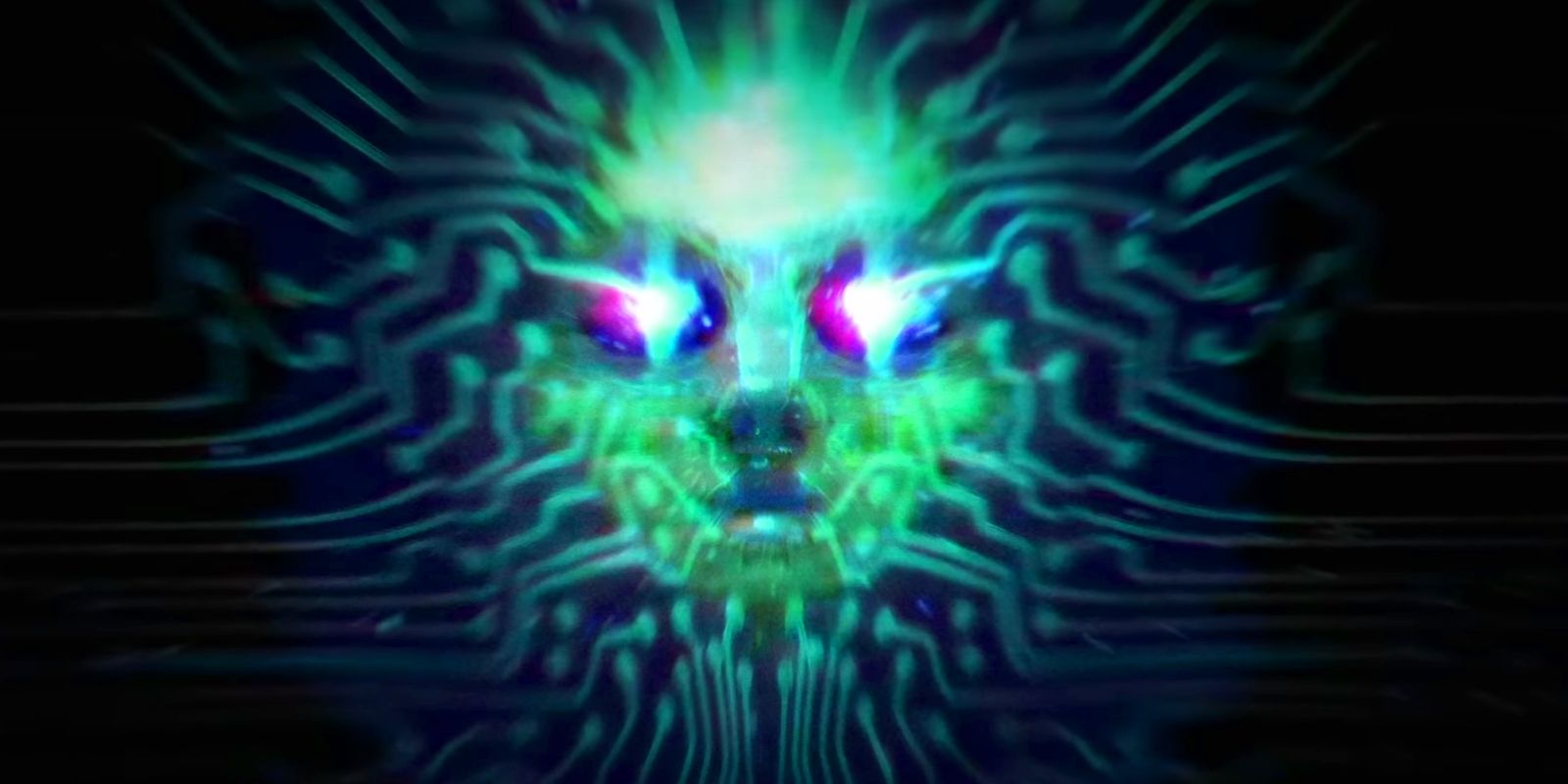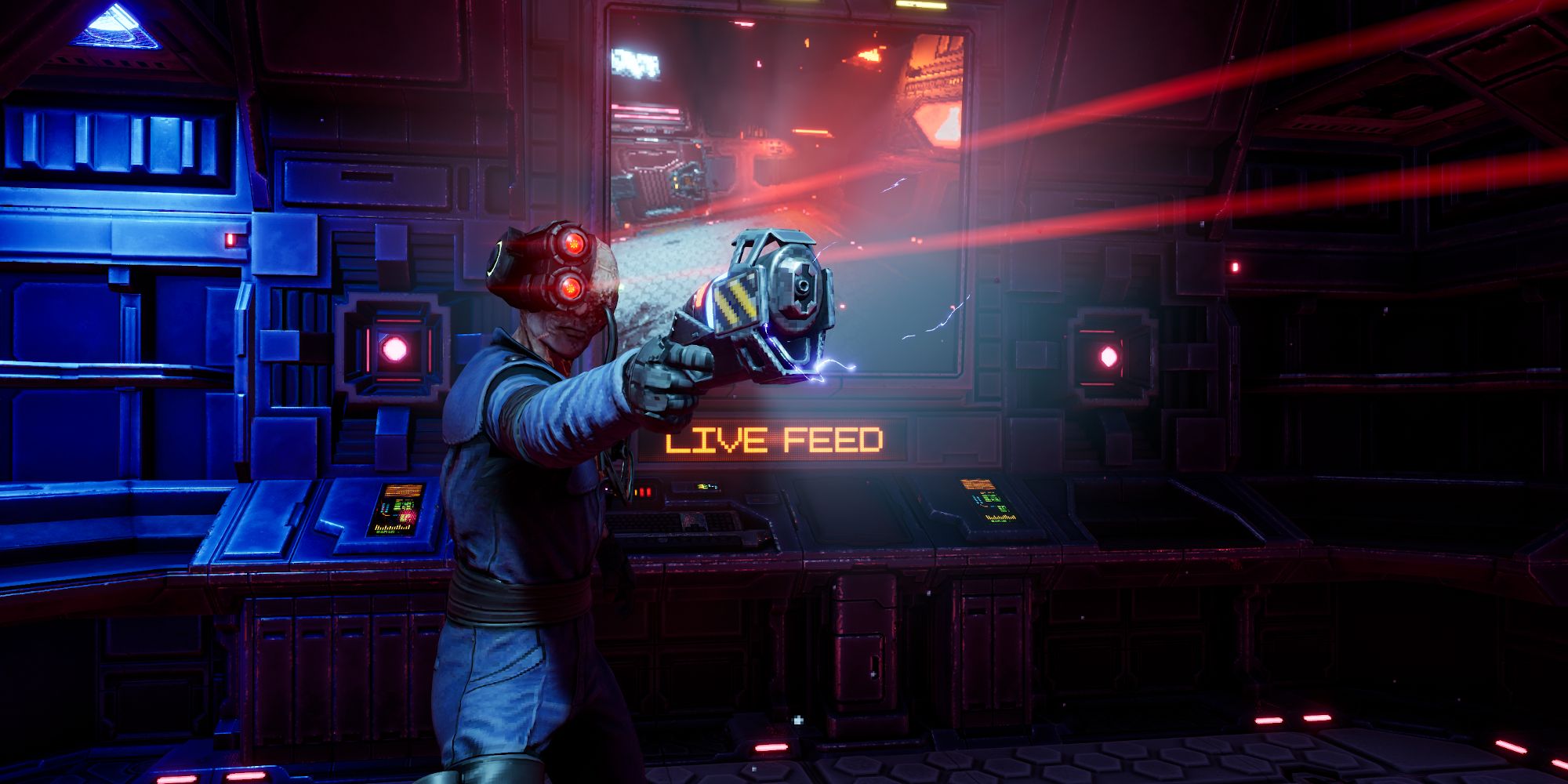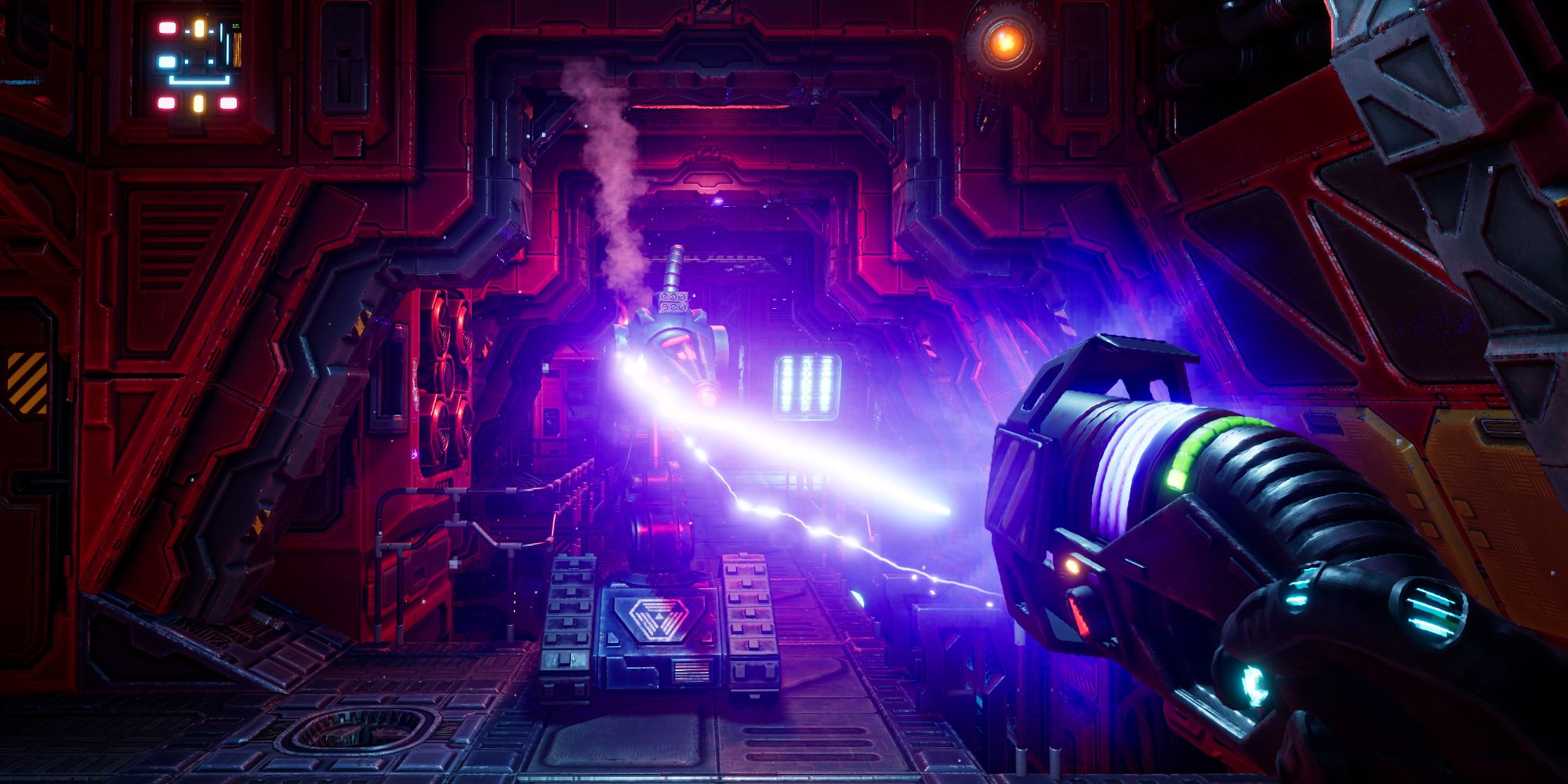Quick Links
The System Shock remake is a faithful recreation of one of gaming history's most influential shooters, and developer Nightdive Studios has updated it beautifully for modern audiences. The original 1994 PC game's design, story, and gameplay created a blueprint for titles like Dead Space and BioShock that wouldn't exist without it. Although the remake was hit with several delays, the end product was worth the wait, making System Shock (2023) the ultimate way to enjoy a gaming classic.
Nightdive Studios' original plans to remaster System Shock were put aside in order to completely remake the title on the Unreal 4 engine. The series spawned a 1999 sequel, but System Shock 3's been in development hell for years. However, thanks to Nightdive Studios, players can now explore a massive space station filled with killer cyborgs, mutated crew members, and the evil AI SHODAN with modern graphics and gameplay. Still, System Shock feels like a great PC shooter of the 90s, for better or worse.
Enemies and Visuals Are Massively Upgraded
System Shock's story starts a little differently than the original. The unnamed hacker begins in their small apartment, which can now be explored, providing a little more personality to the game's silent protagonist. After having their door broken down and being taken by armed soldiers, the Hacker is sent to the Citadel Space Station and forced to erase the station's advanced AI's ethical restraints as part of a corporate takeover. The Hacker is then put in cryo sleep for six months, and when they awaken, it's clear that things did not go as planned. Players must make their way through the space station and stop the AI SHODAN's plans of wiping out the human race.
Like the original, System Shock provides three separate difficulties for Combat, Story, Puzzles, and Hacking that are chosen in the beginning and can't be changed once the game is started. For example, the easiest difficulty in Story will have door codes that will be easier to open rather than randomized and require extensive backtracking to discover. Like many games of the 1990s, System Shock does not hold the player's hand, and can be quite challenging even on normal difficulty. Players must use strategy, resource management, and consumables if they hope to stand a chance against the remake's updated enemy AI.
Certain enemies are weaker to particular ammo types, which plays a significant part in System Shock combat. Some weapons drain the Hacker's blue battery meter, while others can use multiple ammo types. Patches found throughout the game are used to temporarily improve stats, like the Berserk patch that boosts melee attacks which can be devastating to enemies if used with a Laser Rapier. However, side effects from patches and limited inventory space will force players to choose carefully what items they use and carry.
System Shock Feels Left Behind By The Games It Influenced
Like the original game, System Shock is filled with secret paths that often contain much-needed ammo, health pickups, upgrades, and a large selection of weapons. While some secrets can be hard to find, they are worth looking for because some of the hidden gear can dramatically upgrade the player's mobility and radiation resistance. These two abilities become very helpful in the latter half of the game. Newly recorded audio logs can also be found throughout the station, providing lore and sometimes hints about objectives and secret locations.
System Shock's updated visuals are sharp and clean, with vibrant color schemes permeating areas to make them stand out from one another throughout the space station's multiple floors. Enemies have also been updated from their pixely origins. However, most of the game's scares are not caused by how gruesome the enemies look but by jump scares from enemies hiding behind doors or corners, which feels like a missed opportunity. Modern lighting techniques like those seen in the Dead Space Remake would make seeing the red eyes of enemy cyborgs glowing in a pitch-black room a terrifying encounter. Implementing more of that type of environmental terror would have helped transcend System Shock past the restraints of the technology that the original was created for.
Final Thoughts & Our Review Score
The first entry into the System Shock series has never looked or played better. Updated visuals and smoother gameplay have modernized the game that so many others wouldn't have existed without. While the game still feels best on keyboard and mouse, the game's UI should be adjusted to be more controller friendly by the time the console versions are released. It's a great reason to revisit the game or try it for the first time - just keep in mind that some of its systems have long since been improved by modern design.
Source: Nightdive Studios/YouTube
System Shock releases on May 30 for PC. The release date for PlayStation 4, PS5, Xbox One, Xbox Series X/S is TBD. Screen Rant was provided with a Steam code for the purpose of this review.



